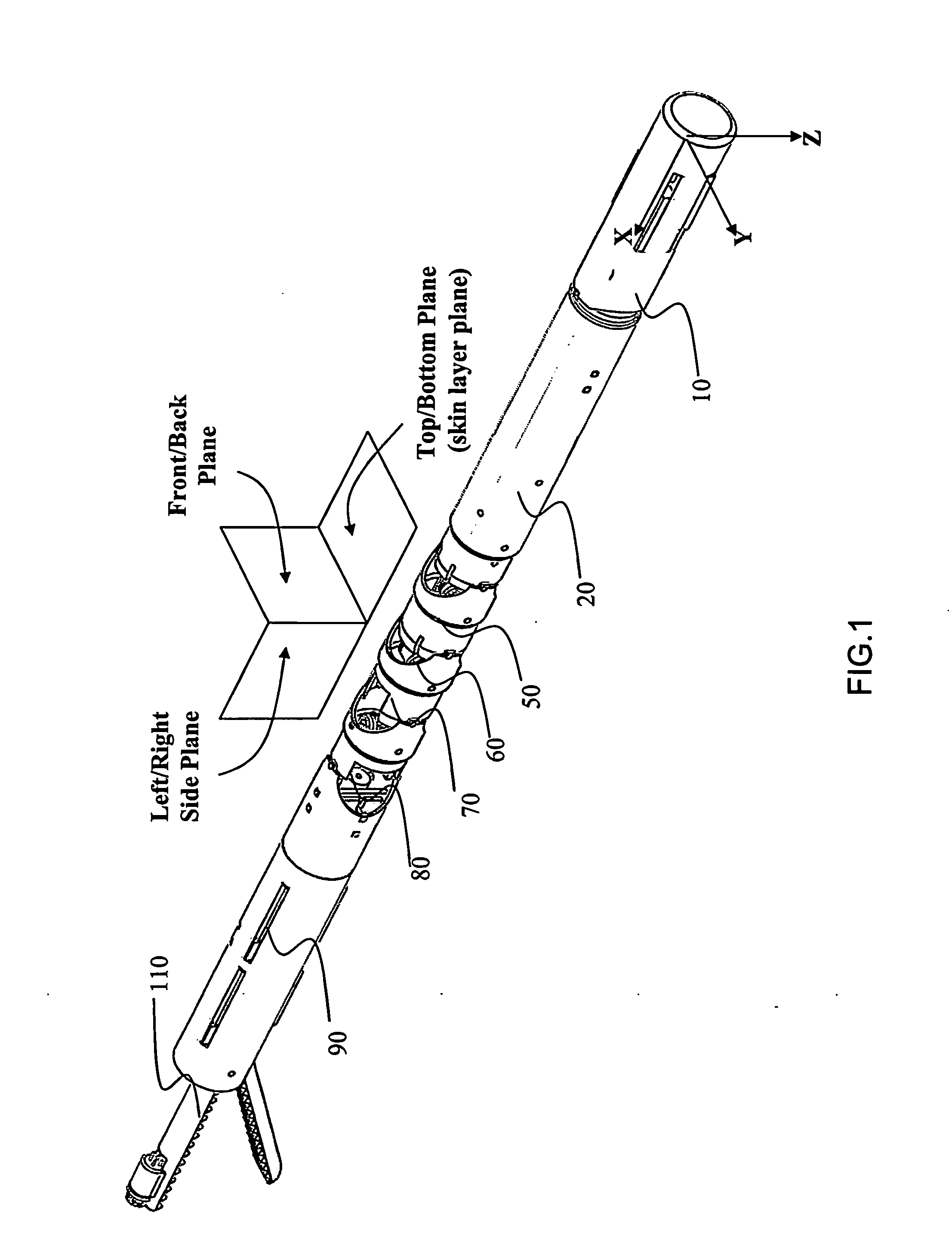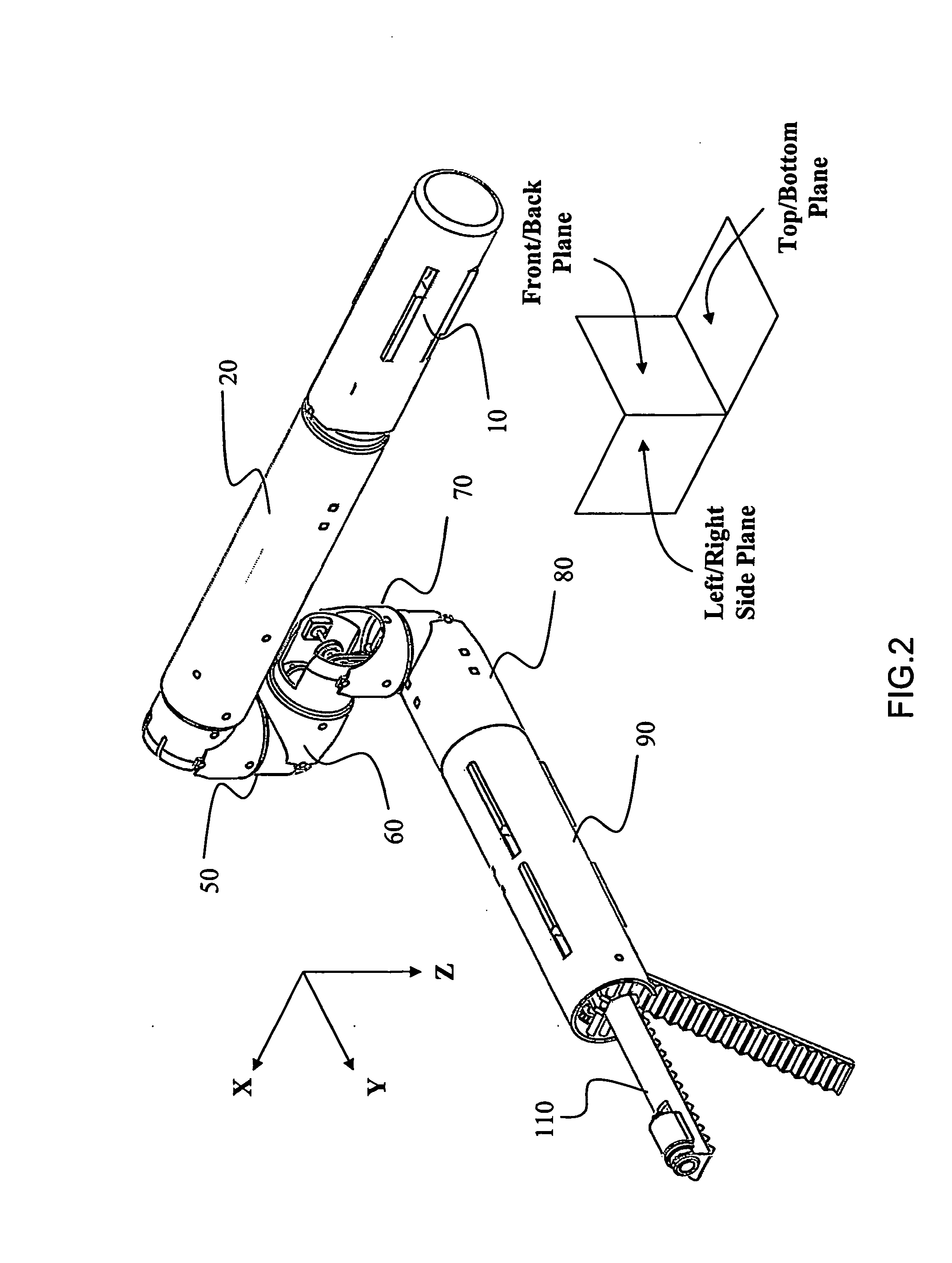Robotic module for natural orifice transluminal endoscopic surgery (NOTES)
a robotic module and endoscope technology, applied in the field of miniature invivo robotic modules, can solve the problems of inability to manipulate tissue with the required dexterity and force, limited amount of human work carried out, and compound challenges, so as to minimize the overall weight of the robotic module, reduce the force and torque requirements of coupling magnets and micro-motors, and minimize the effect of overall weigh
- Summary
- Abstract
- Description
- Claims
- Application Information
AI Technical Summary
Benefits of technology
Problems solved by technology
Method used
Image
Examples
Embodiment Construction
[0077]Referring to FIG. 1, a robotic module for Natural Orifice Transluminal Endoscopic Surgery (NOTES) according to a preferred embodiment of the present invention is illustrated, which consists of a serial manipulator comprised of seven connected cylindrical links and a specialized laparoscopic grasper. The links have a cylindrical geometry that has been optimized for overtube insertion and for enabling maximum joint range of motions (ROM). Although a small portion of the on-board batteries extend slightly beyond the cylinder surface (by less than 1 mm) with a sterilized and protective sheath covering the module, the outer body then consists of only smooth surfaces without any sharp edges that may otherwise damage tissue. Before being placed in the abdominal or peritoneal cavity, it is necessary for the robotic module to navigate from a natural orifice and then possibly through internal sections of the body such as the esophagus and stomach. An endoscope type overtube can be used ...
PUM
 Login to View More
Login to View More Abstract
Description
Claims
Application Information
 Login to View More
Login to View More - R&D
- Intellectual Property
- Life Sciences
- Materials
- Tech Scout
- Unparalleled Data Quality
- Higher Quality Content
- 60% Fewer Hallucinations
Browse by: Latest US Patents, China's latest patents, Technical Efficacy Thesaurus, Application Domain, Technology Topic, Popular Technical Reports.
© 2025 PatSnap. All rights reserved.Legal|Privacy policy|Modern Slavery Act Transparency Statement|Sitemap|About US| Contact US: help@patsnap.com



